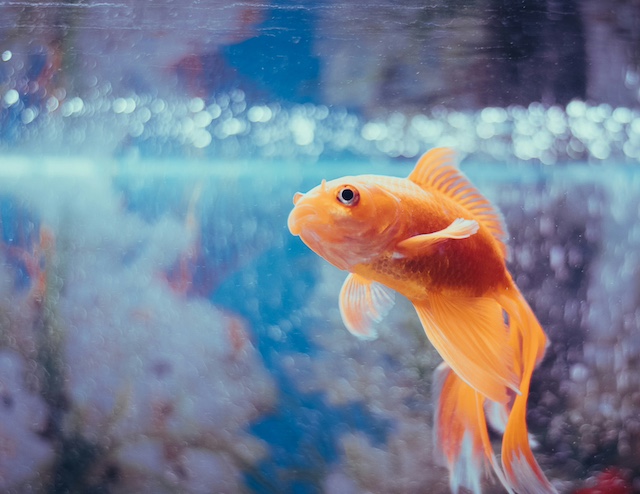Goldfish, the shimmering staples of home aquariums and garden ponds, are more than mere decorative additions to our living spaces. Their legacy as one of the world’s most enduring pet species, capable of an impressive lifespan, is a testament to their tenacity and adaptability. To see a goldfish flit through the water is to witness a creature whose lineage has prevailed through time. But their resilience is not without its limits.
For goldfish keepers seeking to safeguard the vitality of their aquatic friends, understanding the perfect water temperature is crucial. Without the proper environment, the health of these beloved pets may plummet, leaving them susceptible to illness and shortened lifespans.
In this comprehensive guide, we’ll answer the question of what temperature should a fish tank be for goldfish. Not only for their survival but for their thriving existence in your care.
Navigating Temperature: The Goldfish Comfort Zone
Goldfish, with their roots tracing back to cold-water habitats, yearn for conditions that mimic the tranquil and steady flows of outdoor ponds they originate from.
The sweet spot for these creatures lies between 23 and 24 degrees Celsius (73 and 75 degrees Fahrenheit). However, they are versatile, surviving up to 30 degrees Celsius, though not recommended due to potential health risks.
Understanding the Impact of Water Conditions
Water temperature is a pivotal factor influencing a goldfish’s overall well-being. Too cold, and you might find your goldfish lethargically gliding through the water, a clear sign their metabolic functions have slowed down—a defense against harsh conditions.
Conversely, overly warm water can lead to a host of issues, including the dreaded Swim Bladder syndrome, where a goldfish’s ability to regulate its buoyancy is compromised. Regular monitoring and maintenance of appropriate water temperatures ensure our goldfish avoid such pitfalls.
Seasonal Challenges and Strategies
The winter season poses a particular challenge for maintaining optimal water conditions. In their natural habitat, goldfish can only survive in an open river or lake with sufficient depth to prevent total freezing. A depth of at least 4 feet allows for a temporary hibernation, a survival strategy against frigid conditions.
When it comes to nutrition during colder months, less is more. Feeding should be reduced as temperatures drop below 15°C, and ceased entirely at 9°C to prevent digestive issues. A golden rule for winter care: keep your water oxygenated and your goldfish well-adapted to the dropping temperatures.
Tanks and Temperature Control
Tank maintenance is an essential routine that evolves with the seasons. Summer calls for cooler waters, ideally kept below 70°F, to prevent overheating and resulting distress for your goldfish.
Innovative tools like lake thermometers and underwater thermostats aid in precise monitoring, ensuring your goldfish’s habitat is as stable as nature intended.
Treading the Temperature Tightrope
Abrupt changes in temperature spell trouble for goldfish, often inducing thermal shock with symptoms like aimless swimming, surface gasping, and increased mucus production. When changing tank water, it is imperative to maintain a temperature within 2 degrees of the water being replaced to prevent such distress.
For the proactive caretaker, introducing a high-quality filter pathogen product can help your goldfish community rebound from temperature-induced stress. Maintaining a balanced pH, offering nutritionally appropriate food, and ensuring adequate oxygen levels are the underpinnings of goldfish care.
Packing a Punch with Plant Power
The dietary spectrum of goldfish in their natural habitat is diverse, including plants, insects, and crustaceans. Mimicking this diet with high-quality, specially formulated goldfish food available in flake or pellet form is key. Consider the food’s size, pollution potential, and nutritional value when making your selection.
By feeding your goldfish a diet akin to their natural intake, you foster a healthier, more vibrant pet. Remember, goldfish prefer cooler temperatures, but they do have some temperature versatility—maintain a consistent environment for their ultimate contentment.
What Temperature Should a Fish Tank Be for Goldfish? Now You Know!
Goldfish possess a hardy nature. This allows them the flexibility to endure various conditions. Yet, their comfort and health are optimized when dedicated caretakers provide a stable temperature.
Striking the right balance requires careful attention and a willingness to invest in tools and practices that promote a healthy aquatic environment.
Being informed and diligent about the temperature and conditions of your goldfish’s environment is not just an act of maintenance. It’s a practice of care that reflects the respect and admiration for a species that has graced our homes for generations.
By keeping these golden guidelines at the forefront of your fish-keeping practices, your goldfish can enjoy a happy life.
FAQ
Here are answers to some commonly asked questions related to goldfish care:
- What temperature should my tank be for goldfish? The ideal temperature range for a goldfish tank is between 23 and 24 degrees Celsius (73 and 75 degrees Fahrenheit).
- Do I need a heater for goldfish? A heater might be necessary to maintain the ideal temperature range, especially in environments prone to colder temperatures.
- Is 78 degrees too hot for goldfish? While goldfish can survive at 78 degrees Fahrenheit, it’s on the high end of their comfort zone. Long-term exposure to such temperatures is not recommended.
- Can goldfish live in 80-degree water? Goldfish can withstand brief periods in 80-degree water. However, sustained exposure can lead to health issues and is therefore discouraged.
By adhering to this guidance and exercising vigilant care, your goldfish can lead a long, happy, and healthy life, gracing your aquarium or pond with their presence for years to come.
Read Next: Do Goldfish Sleep? We Answer That Question and More

